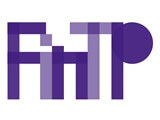Regulatory technology, in short RegTech, emerged from the increasing levels of regulation and challenging expectations that impact financial institutions all over the world.
Something Old, Something New
Under the sign of constant improvement, the European Union adopted a new directive on payment services in 2015, to become applicable starting January 13, 2018.
The first directive (in force since 2009) covers all types of electronic and non-cash payments, such as credit transfers, direct debits, card payments, mobile and online payments, and its purpose was to establish the same set of rules on payments across the entire EEA (EU + Iceland, Liechtenstein and Norway), helping consumers make easy and safe cross-border payments.
 According to this directive (PSD1), payment service providers (PSPs) must give suitable information to consumers, ensure fast and efficient service, and must compensate the consumer in case the services are not provided correctly.
According to this directive (PSD1), payment service providers (PSPs) must give suitable information to consumers, ensure fast and efficient service, and must compensate the consumer in case the services are not provided correctly.
The added value that PSD2 brings to the table is taking into account new digital payment services, including provisions to make internet payments easier and safer, better protecting consumers against fraud and payment problems, and strengthening their rights as well as the role of the European Banking Authority (EBA).
Along with this new directive comes a regulation on multilateral interchange fees, and their combined purpose is to limit the fees for transactions based on consumer debit and credit cards, banning retailers from imposing surcharges on customers for using these types of cards.
Aside from increasing competition in the payments industry, what PSD2 aims for is to keep up with the rapid changes in the field, due to market development, evolving customer needs and more advanced technological capabilities.
The Greatest Impact of PSD2 – Introducing TPPs
Undressing this new directive layer by layer, the major change is revealed in terms of competition: the introduction of so-called Third Party Providers (TPPs), who may provide certain types of payment-related services, and whom financial institutions will have to open their account interfaces to. This is, in fact, meant to slice the economic cake that banks indulge on, and give away a piece to new entry players.
 These new TPPs will fall under one of these two types of licenses: Payment Initiation Service Providers (PISPs) and Account Information Service Providers (AISPs), both more restrictive in terms of service types than for regular payment institutions, but definitely detrimental to the latter, since banks are to make automatic payment orders possible without actually benefitting from the transactions.
These new TPPs will fall under one of these two types of licenses: Payment Initiation Service Providers (PISPs) and Account Information Service Providers (AISPs), both more restrictive in terms of service types than for regular payment institutions, but definitely detrimental to the latter, since banks are to make automatic payment orders possible without actually benefitting from the transactions.
Apart from the declared role of the intermediaries in payment transactions, that is to ensure transparency and non-discriminatory, open environments, let’s take a look at the real pros and cons implied by PSD2 for all parties involved:
A. Only Pros -> Merchants
- Reduced costs
- Immediate settlement
- Improved direct relationship with the customers
B. Mostly Pros -> Consumers
- Ability to have all accounts (secured) in one place
- Choice of most convenient interface for checking bank account details
- Practical & convenient direct integration of bank account with merchant sites
Flag: Not clear who is responsible in the event of loss: the PISP (merchant), or the ASPSP (bank)
C. Mostly Cons -> Banks
- Significant costs for implementing changes
- Tight implementation deadline
- Weaker relationship with the consumer
At least, they may position themselves as an AISP…
Either way, the one big benefit of PSD2 is that it forces a partnership between various payment service providers and established financial institutions and this comes in a time when these parties are trying to compete with one another, rather than trying to work together to offer better services to people.
Why switch to FinTP
It’s a known fact that the current financial transaction processing market has rich, highly benchmarked applications, distributed under proprietary software-licensing frames. However, this implies high investments, not only because of the premium price attached to them, but also in terms of maintenance and necessary upgrades, not to mention the untimely fashion in which regulatory compliance is achieved. Last, but not least, all proprietary solutions create a strong dependence on the vendor that supplies them. And this can be tricky when changes need to be implemented.
 This is where Allevo’s FinTP solution fits into the picture, as a highly reliable, secure and resilient OSS product with proper support, which will empower SMEs to perform their businesses in compliance with evolving industry regulations and standards, while lowering the total cost of ownership (TCO) by up to 90%.
This is where Allevo’s FinTP solution fits into the picture, as a highly reliable, secure and resilient OSS product with proper support, which will empower SMEs to perform their businesses in compliance with evolving industry regulations and standards, while lowering the total cost of ownership (TCO) by up to 90%.
This open source product is highly flexible, affordable, secure and fast to implement for processing financial transactions in a fast changing world. Its key factors are interoperability and standardization, which enable a unified flow of transactions, necessary both to accommodate newcomers and to help existing companies to strive.
Allevo’s guaranteed distribution (in terms of reliability, security and maintenance) shifts the revenue streams from license sales to services offered to its customers through a subscription based model, which is both transparent and business friendly.
We, at Allevo, strongly believe that the future belongs to those who challenge expectations and harvest trust and respect from every market and every customer, so we clearly stand by EU’s intention to encourage competition and increase customer protection, offering our partners all the support they need in this transition.
Bear in mind that we are deeply aware of the uniqueness of every bank and financial corporation, and our specialized skills are a sum of customized solutions for different and specific needs.









